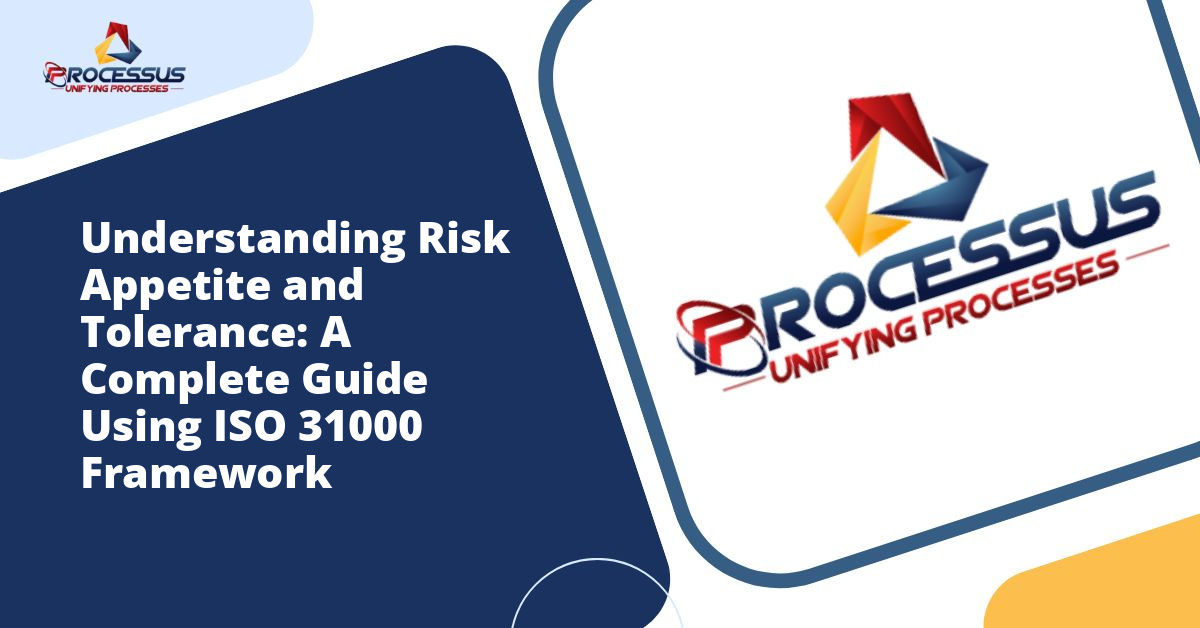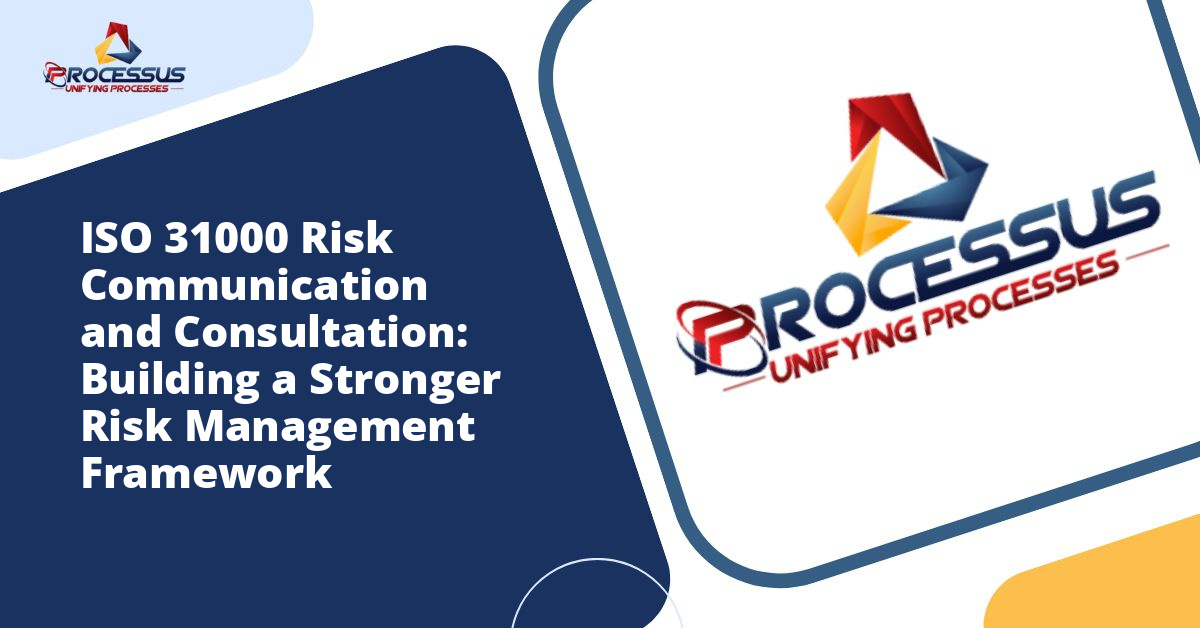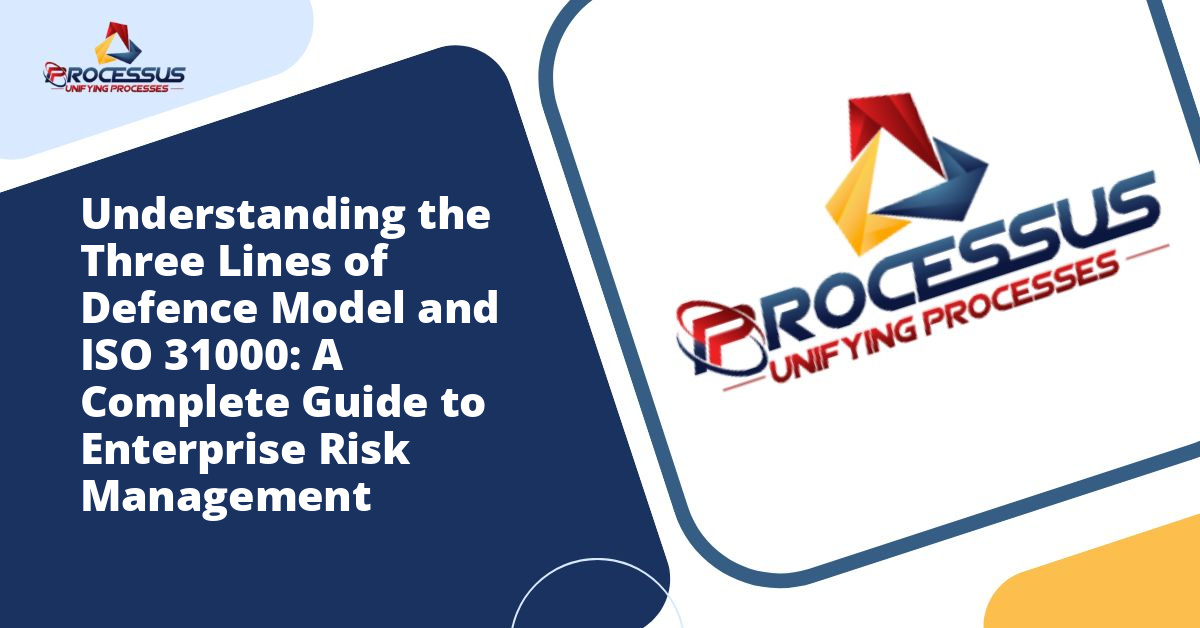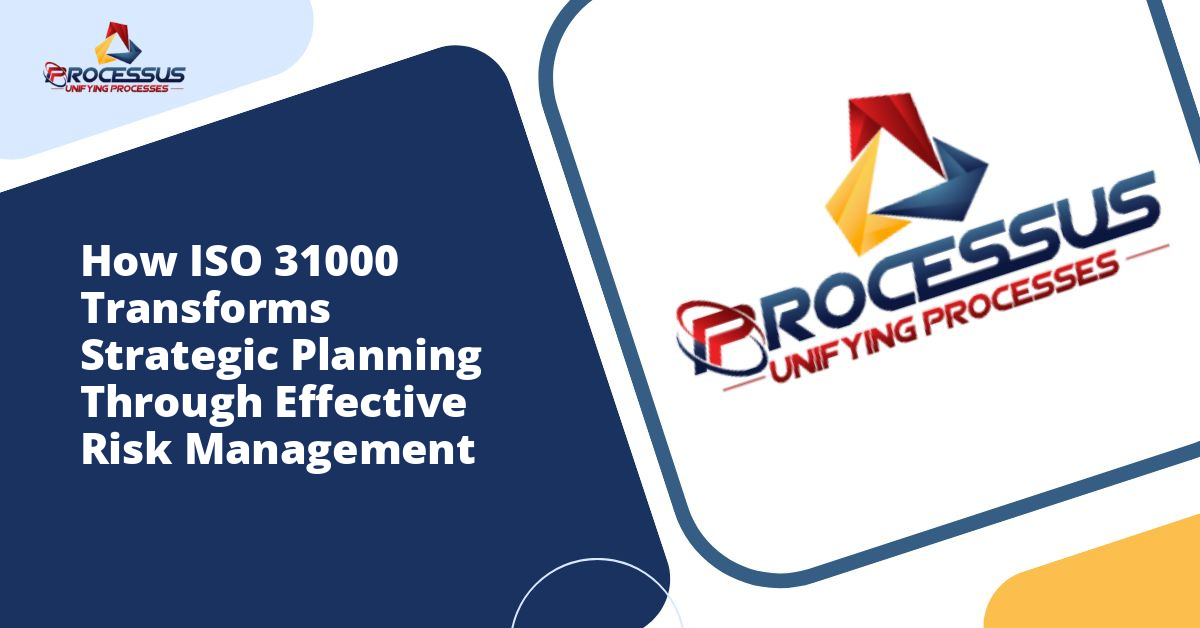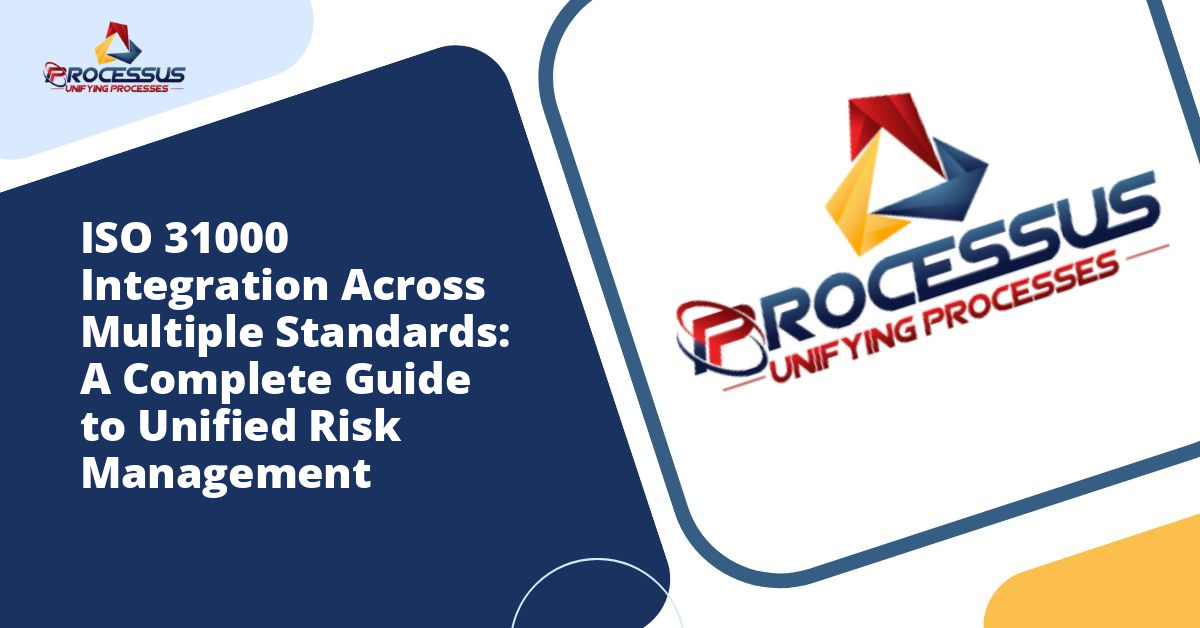In today’s complex business environment, organizations face an ever-increasing array of risks that can impact their ability to achieve strategic objectives. Understanding and properly defining risk appetite and tolerance has become essential for effective risk management. The ISO 31000 standard provides a comprehensive framework that helps organizations navigate these critical concepts with clarity and precision.
This guide explores the fundamental principles of risk appetite and tolerance within the context of ISO 31000, offering practical insights for businesses seeking to strengthen their risk management capabilities. You might also enjoy reading about ISO 31000 Risk Management Framework Implementation: A Complete Guide for Organizations.
The Foundation of Risk Management in ISO 31000
ISO 31000 represents the international standard for risk management, providing principles, framework, and processes for managing risk across any organization, regardless of size, type, or industry. First published in 2009 and updated in 2018, this standard has become the global benchmark for establishing robust risk management practices.
The standard emphasizes that risk management should be an integral part of organizational governance and leadership. It promotes a systematic approach to identifying, analyzing, evaluating, and treating risks while maintaining continuous communication and monitoring throughout the process.
At the heart of ISO 31000 lies the understanding that every organization must determine how much risk it is willing to accept in pursuit of its objectives. This determination forms the basis for defining risk appetite and tolerance, two concepts that are closely related yet distinctly different.
Defining Risk Appetite Within the ISO 31000 Context
Risk appetite represents the amount and type of risk that an organization is willing to pursue, retain, or take in order to achieve its strategic objectives. It reflects the organization’s overall approach to risk-taking and serves as a guiding principle for decision-making at all levels.
Within the ISO 31000 framework, risk appetite is not simply about accepting or avoiding risk. Rather, it involves a sophisticated understanding of how much risk exposure aligns with the organization’s strategy, capabilities, and stakeholder expectations. Risk appetite acknowledges that taking calculated risks is often necessary for growth, innovation, and competitive advantage.
Components of Risk Appetite
An effective risk appetite statement encompasses several key components that provide comprehensive guidance for organizational decision-making:
- Strategic alignment: Risk appetite must directly support the organization’s strategic goals and mission. Every risk-taking decision should be evaluated against whether it advances or hinders strategic objectives.
- Quantitative measures: Organizations should establish specific metrics that define acceptable risk levels. These might include financial thresholds, performance indicators, or probability ranges that provide concrete boundaries for risk acceptance.
- Qualitative considerations: Beyond numbers, risk appetite includes subjective factors such as reputation, stakeholder confidence, and organizational culture. These elements shape how the organization perceives and responds to different risk categories.
- Time horizon: Risk appetite may vary depending on short-term versus long-term considerations. Organizations must clarify whether their risk appetite differs across various planning timeframes.
- Risk categories: Different types of risks may warrant different appetite levels. Strategic risks might have a higher appetite compared to compliance or operational risks, depending on the organization’s priorities.
Establishing Risk Appetite Statements
Creating a clear risk appetite statement requires collaborative effort from leadership, risk managers, and key stakeholders. The process typically involves extensive discussion about organizational values, strategic priorities, and stakeholder expectations.
Effective risk appetite statements are specific rather than generic. Instead of vague declarations about being “risk-aware” or “moderately risk-tolerant,” strong statements provide concrete guidance. For example, a technology company might state that it accepts high levels of innovation risk to maintain market leadership but maintains zero tolerance for data security breaches.
The statement should be documented formally and communicated throughout the organization. Everyone from the board of directors to operational staff should understand what risks the organization is willing to take and which risks fall outside acceptable boundaries.
Understanding Risk Tolerance in Practice
While risk appetite describes the overall approach to risk-taking, risk tolerance refers to the specific, measurable amount of risk that an organization can withstand in pursuit of its objectives. Tolerance represents the acceptable deviation from risk appetite and typically includes defined thresholds or limits.
Risk tolerance operates at a more granular level than risk appetite. While appetite provides strategic direction, tolerance offers tactical boundaries. Think of risk appetite as the philosophical approach to risk, while risk tolerance represents the practical limits that trigger action.
Characteristics of Risk Tolerance
Risk tolerance possesses several distinct characteristics that differentiate it from risk appetite:
- Specificity: Tolerance levels are typically expressed in precise, measurable terms. Organizations might define tolerance as a specific percentage deviation, dollar amount, or probability threshold that cannot be exceeded.
- Actionable triggers: When risk exposure approaches or exceeds tolerance levels, predetermined responses are activated. These might include escalation procedures, mitigation actions, or decision-making protocols.
- Variability: Tolerance levels can differ across business units, projects, or risk categories while still aligning with the overall risk appetite. A single organization might have multiple tolerance thresholds for different contexts.
- Dynamic nature: Risk tolerance may shift based on changing circumstances, performance results, or external factors. Regular review and adjustment ensure tolerance levels remain appropriate and achievable.
Setting Appropriate Tolerance Levels
Determining appropriate risk tolerance requires careful analysis of organizational capacity, resources, and constraints. The process involves assessing how much variation from expected outcomes the organization can absorb without jeopardizing its viability or strategic position.
Tolerance setting should consider multiple factors including financial resilience, operational capacity, regulatory requirements, and stakeholder expectations. Organizations must be realistic about their ability to withstand losses or setbacks while continuing to function effectively.
Effective tolerance setting also requires input from various organizational levels. While senior leadership establishes overall parameters, operational managers provide valuable insights into practical limitations and implementation challenges. This collaborative approach ensures tolerance levels are both aspirational and achievable.
The Relationship Between Risk Appetite and Tolerance
Risk appetite and tolerance work together as complementary elements of a comprehensive risk management approach. Understanding their relationship is crucial for effective implementation within the ISO 31000 framework.
Risk appetite sets the strategic direction, answering the question of what types and levels of risk the organization is willing to accept. Risk tolerance translates this strategic intent into operational reality, defining specific boundaries and triggers for action.
Consider a financial services firm with a moderate risk appetite for credit risk. This appetite reflects a balanced approach between growth and prudence in lending activities. The corresponding risk tolerance might specify that the non-performing loan ratio cannot exceed three percent, with escalation procedures triggered when the ratio reaches 2.5 percent. The appetite guides the overall lending philosophy, while tolerance provides concrete operational limits.
Alignment and Consistency
Maintaining alignment between risk appetite and tolerance is essential for coherent risk management. Tolerance levels must logically flow from and support the stated risk appetite. Misalignment creates confusion, undermines risk governance, and can lead to either excessive risk-taking or overly conservative decision-making.
Organizations should regularly review the consistency between appetite and tolerance, particularly when strategic priorities shift or external conditions change significantly. This review process helps ensure that operational boundaries continue to reflect strategic intent.
Implementing Risk Appetite and Tolerance Using ISO 31000 Principles
ISO 31000 provides a structured approach for implementing risk appetite and tolerance throughout the organization. The standard emphasizes integration, customization, and continuous improvement as core principles guiding this implementation.
Integration into Governance Structures
Effective implementation begins with embedding risk appetite and tolerance into organizational governance. The board of directors and senior leadership must take ownership of defining and approving these parameters, demonstrating commitment from the top.
Governance structures should clearly delineate responsibilities for monitoring risk appetite and tolerance. This includes establishing reporting mechanisms, escalation procedures, and decision-making authorities when risks approach or exceed tolerance levels.
Risk committees, audit functions, and internal control systems all play important roles in ensuring adherence to established appetite and tolerance parameters. Their oversight helps maintain discipline and consistency in risk-taking activities.
Communication and Culture
ISO 31000 emphasizes the importance of communication and consultation throughout the risk management process. Organizations must effectively communicate their risk appetite and tolerance to all stakeholders, ensuring widespread understanding and acceptance.
Communication should be ongoing rather than a one-time event. Regular dialogue about risk appetite and tolerance helps reinforce their importance and keeps them relevant as circumstances evolve. Training programs, workshops, and regular updates support this continuous communication effort.
Building a risk-aware culture requires more than just communicating policies and procedures. Leadership must model appropriate risk behavior, reward decisions aligned with risk appetite, and address situations where tolerance levels are breached. This cultural dimension transforms risk appetite and tolerance from abstract concepts into lived organizational values.
Monitoring and Review
ISO 31000 requires ongoing monitoring and periodic review of risk management effectiveness. This principle applies directly to risk appetite and tolerance, which must be regularly assessed for continued relevance and appropriateness.
Monitoring involves tracking actual risk exposure against established tolerance levels, identifying trends, and detecting potential breaches before they occur. Effective monitoring systems provide real-time visibility into risk positions and enable proactive management.
Periodic review examines whether the risk appetite and tolerance levels themselves remain suitable given changing conditions. Strategic shifts, market developments, regulatory changes, or performance results may all necessitate adjustments to appetite and tolerance parameters.
Practical Applications Across Different Risk Categories
Risk appetite and tolerance apply across all types of organizational risks. However, their expression may vary depending on the specific risk category being addressed.
Financial Risk
Financial risk appetite and tolerance are often the most quantifiable and explicit. Organizations might define appetite in terms of acceptable earnings volatility, maximum exposure limits, or capital adequacy ratios. Tolerance levels provide specific thresholds that trigger risk mitigation actions or strategic reviews.
A manufacturing company might express high appetite for market expansion risk while maintaining low tolerance for currency fluctuations beyond a certain percentage. This combination supports growth objectives while protecting against excessive financial volatility.
Operational Risk
Operational risk encompasses threats to business processes, systems, and service delivery. Appetite statements might address acceptable levels of process variation, system downtime, or supply chain disruption. Tolerance metrics could include maximum acceptable incident frequency, recovery time objectives, or quality deviation ranges.
Organizations balancing efficiency with resilience must carefully calibrate operational risk appetite and tolerance. Lean operations may increase efficiency but reduce tolerance for disruptions, requiring thoughtful risk-return trade-offs.
Strategic and Reputational Risk
Strategic and reputational risks present unique challenges for defining appetite and tolerance due to their often qualitative nature. Organizations must translate subjective concepts into actionable parameters that guide decision-making.
Strategic risk appetite might address acceptable levels of uncertainty in new market entry, innovation investments, or competitive positioning. Reputational risk tolerance could be expressed through stakeholder sentiment metrics, media coverage parameters, or brand value thresholds.
Compliance and Legal Risk
Most organizations express very low or zero appetite for compliance and legal risks, particularly regarding violations of laws and regulations. However, tolerance levels acknowledge that perfect compliance may be aspirational, with specific thresholds defined for minor deviations or technical breaches.
Clear communication about compliance risk appetite reinforces organizational values and ethical standards. Even when appetite is minimal, defining tolerance helps distinguish between material violations requiring immediate action and minor issues that can be addressed through standard corrective processes.
Common Challenges and Solutions
Organizations often encounter obstacles when defining and implementing risk appetite and tolerance. Recognizing these challenges and developing appropriate solutions strengthens overall risk management effectiveness.
Vagueness and Ambiguity
One frequent challenge involves statements that are too vague to provide meaningful guidance. Generic declarations about being “prudent” or “balanced” in risk-taking offer little practical direction for decision-makers facing real choices.
The solution lies in developing specific, measurable parameters that translate philosophical intent into operational reality. Organizations should invest time in defining concrete metrics and thresholds rather than relying on abstract language.
Disconnect Between Stated and Actual Appetite
Sometimes organizations discover that their stated risk appetite differs significantly from their actual risk-taking behavior. This disconnect undermines credibility and creates confusion about acceptable practices.
Addressing this challenge requires honest assessment of current risk profiles and decision-making patterns. Organizations must either adjust their stated appetite to reflect reality or implement changes to align behavior with stated intentions. Regular monitoring and transparent reporting help maintain this alignment over time.
Lack of Integration
Risk appetite and tolerance sometimes remain isolated concepts documented in policies but disconnected from daily operations and decision-making. This isolation prevents them from influencing behavior and delivering value.
Successful integration requires embedding risk appetite and tolerance into planning processes, performance management systems, and decision-making frameworks. When budget allocation, project approval, and strategic planning all reference risk appetite and tolerance, these concepts become practical tools rather than theoretical constructs.
The Strategic Value of Well-Defined Risk Appetite and Tolerance
Organizations that successfully define and implement risk appetite and tolerance within the ISO 31000 framework realize significant strategic benefits. These advantages extend beyond risk management to enhance overall organizational performance and resilience.
Clear risk appetite and tolerance enable more confident and consistent decision-making. When leaders understand the boundaries within which they can operate, they make faster, more decisive choices without constantly seeking approval or second-guessing themselves.
These parameters also facilitate resource allocation by helping organizations distinguish between risks worth taking and those to be avoided or mitigated. Limited resources can be focused on managing risks that exceed tolerance while accepting those within appetite boundaries.
Well-articulated risk appetite and tolerance enhance stakeholder confidence. Investors, customers, regulators, and other stakeholders gain assurance that the organization manages risks thoughtfully and systematically. This confidence can translate into competitive advantages including lower capital costs, stronger customer loyalty, and enhanced reputation.
Conclusion
Risk appetite and tolerance represent foundational concepts in modern risk management, providing essential guidance for organizations navigating uncertain environments. The ISO 31000 framework offers a structured approach for defining, implementing, and maintaining these critical parameters.
Risk appetite establishes the strategic direction for risk-taking, reflecting organizational values, objectives, and capabilities. Risk tolerance translates this strategic intent into operational boundaries, creating specific thresholds that trigger action and guide daily decision-making.
Successful implementation requires leadership commitment, clear communication, integration into governance structures, and ongoing monitoring and review. Organizations must invest time and effort in developing specific, measurable parameters that provide genuine guidance rather than generic platitudes.
The challenges of vagueness, misalignment, and poor integration can be overcome through dedicated focus, collaborative development processes, and systematic embedding of risk appetite and tolerance into organizational systems and culture.
Ultimately, well-defined risk appetite and tolerance enable organizations to take calculated risks in pursuit of their objectives while avoiding exposures that could threaten viability or strategic position. This balanced approach, grounded in ISO 31000 principles, supports sustainable performance, enhanced resilience, and confident leadership in an increasingly complex and uncertain world.
Organizations that master these concepts position themselves for long-term success, making informed risk decisions that create value while protecting against unacceptable losses. As risk management continues to evolve, the fundamental importance of clearly defined risk appetite and tolerance will only grow, making their proper understanding and implementation essential for organizational excellence.

